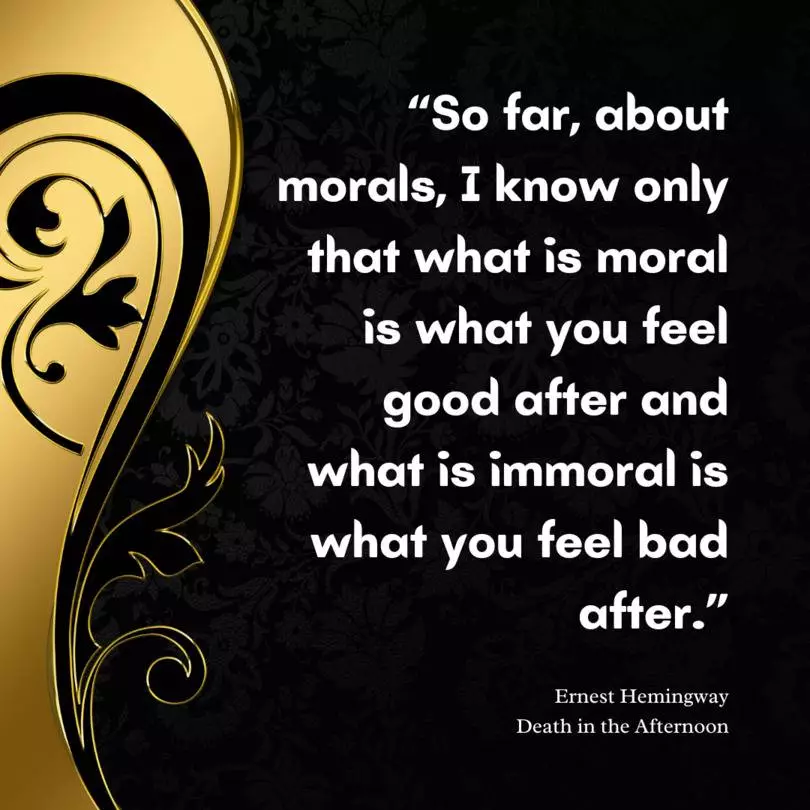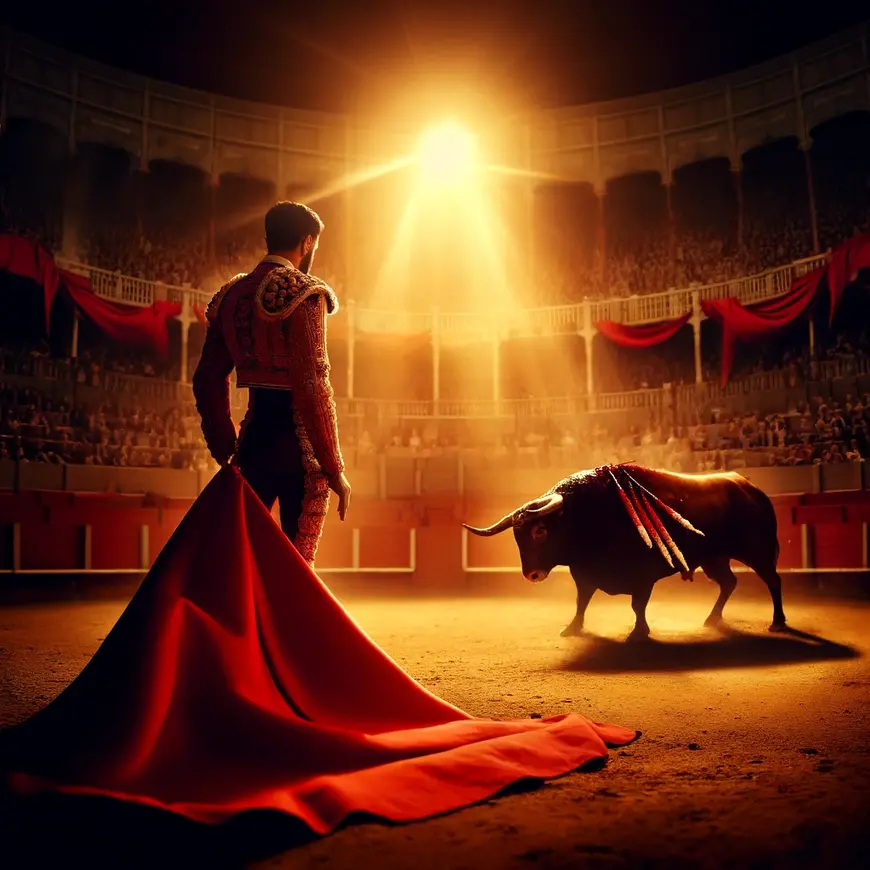Bulls, Bravado, and the Art of Life – A Review of “Death in the Afternoon” by Ernest Hemingway
Hemingway’s Bold Insight into the Bullfight – A Deep Dive into “Death in the Afternoon”
In the realm of literature that captures the essence of passion and tradition, Ernest Hemingway‘s “Death in the Afternoon” stands as a captivating exploration of the art of bullfighting. With prose that pulses with intensity, Hemingway paints a vivid picture of this centuries-old tradition, inviting readers to immerse themselves in the world of the matador and the fierce grace of the bullring.
Unveiling the Arena: The World of “Death in the Afternoon”
Imagine a world where courage and spectacle collide, where man and beast face off in a dance of danger and honor. “Death in the Afternoon” offers an intimate look into the world of bullfighting, as Hemingway delves into the intricacies of the sport and its cultural significance. Through his narrative, he explores the dynamics of the bullfight, the history that has shaped it, and the passions that fuel its practitioners.
The setting of “Death in the Afternoon” transcends time and place; it’s an arena of emotions and traditions. Hemingway’s narrative mirrors the raw intensity of the bullring, as he takes readers on a journey through the adrenaline-soaked world of the matador and the poetic brutality of the bull.

An Ode to Bravery: Characters in the Spotlight
While “Death in the Afternoon” is not traditional fiction, its characters are real. The matadors step into the ring, and the bulls face them. Hemingway’s portrayal of these characters goes beyond their physical roles. He examines the psychology of the matador. He explores the intricate dance of bravery and fear that defines their every move.
The bulls themselves become symbols. They represent primal power and inevitable mortality. Hemingway explores their behavior. He observes their instinctual reactions and their ultimate fate. This invites readers to ponder the delicate balance between life and death. This balance defines the bullfight.
Themes of Tradition and Bravado: Insights Explored
“Death in the Afternoon” delves into themes that resonate deeply with human experience. Tradition is a central motif. Hemingway examines the rituals and customs that have shaped bullfighting for centuries. Moreover, his exploration of the historical and cultural context of the sport provides readers with a nuanced understanding of its significance to Spanish culture.
Bravado is another prominent theme. Hemingway’s portrayal of the matadors’ courage and their willingness to confront danger head-on offers insights into the nature of bravery and the allure of risk. Additionally, he explores the motivations that drive individuals to place themselves in the path of danger. This sheds light on the complex interplay of ego, honor, and the desire for recognition.
Prose as a Dance of Words: Hemingway’s Writing Style
Hemingway’s writing style is a dance of words that echoes the rhythms of the bullfight. His language is spare yet evocative, capturing the raw energy and intensity of the arena. Hemingway’s prose is a testament to his signature writing style – the iceberg theory – where much lies beneath the surface of the words, inviting readers to interpret and engage with the narrative on a deeper level.
The novel’s structure reflects the stages of the bullfight. Hemingway guides readers through the rituals, strategies, and climax of the encounter. Furthermore, his writing style is both immersive and introspective. This allows readers to step into the shoes of the matadors and experience the rush of emotions that accompany the fight.
Timeless Insight: Relevance Today
While “Death in the Afternoon” is rooted in its historical context, its exploration of tradition, courage, and the allure of risk remains relevant in the modern world. Today, we are marked by the pursuit of excitement, the tension between tradition and innovation, and the ongoing fascination with spectacle. Hemingway’s insights into the motivations that drive individuals to embrace danger offer a timeless perspective.
The theme of tradition is also pertinent in today’s society. Individuals grapple with the tension between preserving cultural heritage and embracing progress. Hemingway’s exploration of the cultural significance of bullfighting prompts readers to reflect on the ways traditions shape identity and offer a connection to history.

Famous Quotes from “Death in the Afternoon” by Ernest Hemingway
- “Bullfighting is the only art in which the artist is in danger of death and in which the degree of brilliance in the performance is left to the fighter’s honor.”
- Explanation: Hemingway elevates bullfighting to the level of high art, emphasizing its unique nature. The matador’s life is at risk, making each performance a profound act of bravery and skill. This quote highlights the blend of danger and artistry that fascinated Hemingway and is central to the book’s exploration of bullfighting.
- “A writer’s job is to tell the truth.”
- Explanation: This quote encapsulates Hemingway’s literary philosophy. He believed in the importance of honesty and authenticity in writing. In “Death in the Afternoon,” he applies this principle to his detailed and unvarnished depiction of bullfighting, aiming to present it as it truly is.
- “The individual man is the greatest enemy of the mass and the mass is the greatest enemy of the individual.”
- Explanation: Hemingway reflects on the tension between individuality and collective identity. In the context of bullfighting, the matador stands as an individual against the mass of the audience and the bull. This idea extends to Hemingway’s broader views on society and the individual’s struggle for personal significance.
- “All stories, if continued far enough, end in death, and he is no true storyteller who would keep that from you.”
- Explanation: This quote underscores the inevitability of death and the role of the storyteller in confronting it. Hemingway acknowledges the ultimate fate that awaits everyone, and in “Death in the Afternoon,” he does not shy away from the brutal realities of bullfighting, presenting death as an integral part of the narrative.
Trivia Facts about “Death in the Afternoon”
- Inspired by Spain: Hemingway wrote “Death in the Afternoon” after spending significant time in Spain. He fell in love with Spanish culture, especially bullfighting, which is the central focus of the book.
- Influence of Gertrude Stein: Gertrude Stein, a famous writer and mentor to Hemingway, influenced his work. She encouraged his interest in Spanish culture and bullfighting, which became central themes in “Death in the Afternoon.”
- Connection to James Joyce: Hemingway and James Joyce were friends in Paris. Both writers admired each other’s work. While Joyce was known for his modernist literature, Hemingway’s straightforward style in “Death in the Afternoon” offered a different, yet equally compelling, literary approach.
- Published in 1932: “Death in the Afternoon” was published in 1932, during a vibrant period in American literature. Other notable writers of the time included F. Scott Fitzgerald and William Faulkner, who were contemporaries of Hemingway.
- Influence on Orson Welles: Filmmaker Orson Welles was influenced by Hemingway’s depiction of bullfighting. Welles developed a passion for bullfighting and even became an amateur bullfighter himself, showcasing the cultural impact of Hemingway’s work.
- Paris Literary Scene: Hemingway wrote parts of “Death in the Afternoon” while living in Paris. The city’s rich literary scene, which included famous writers like Ezra Pound and T.S. Eliot, provided a stimulating environment for Hemingway’s writing.
Final Thoughts on “Death in the Afternoon” : A Portrait of Passion and Honor
“Death in the Afternoon” is an immersive journey into bullfighting, a realm where bravery and tradition collide. Ernest Hemingway’s narrative invites readers to witness the spectacle of the arena. It engages with the psychology of the matadors and contemplates the interplay of life and death in the bullfight.
As readers delve into the pages of “Death in the Afternoon,” they are reminded of the power of tradition. Additionally, they see the allure of courage and the primal instincts that define human experience. Hemingway’s prose captures the essence of the bullring, a place where life hangs in the balance. In this setting, the pursuit of glory and the acceptance of mortality converge in a poetic display. Ultimately, it illustrates humanity’s triumph over fear.
Other Reviews of Works by Ernest Hemingway
Navigating Desperation and Desire: A Summary of “To Have and Have Not” by Ernest Hemingway In Ernest Hemingway’s riveting novel…
An Evocative Expedition of Emotions: “The Snows of Kilimanjaro” by Ernest Hemingway “The Snows of Kilimanjaro” by American author Ernest…
A Timeless Tale of Resilience and Redemption: Ernest Hemingway’s “The Old Man and the Sea” Ernest Hemingway, one of the…
Review of “Fiesta” by Ernest Hemingway: With Intensity into the Heart of Passion Ernest Hemingway, the unparalleled master of concise…
A Profound Exploration of War, Love, and Humanity: Ernest Hemingway’s For Whom the Bell Tolls Ernest Hemingway’s “For Whom the…




